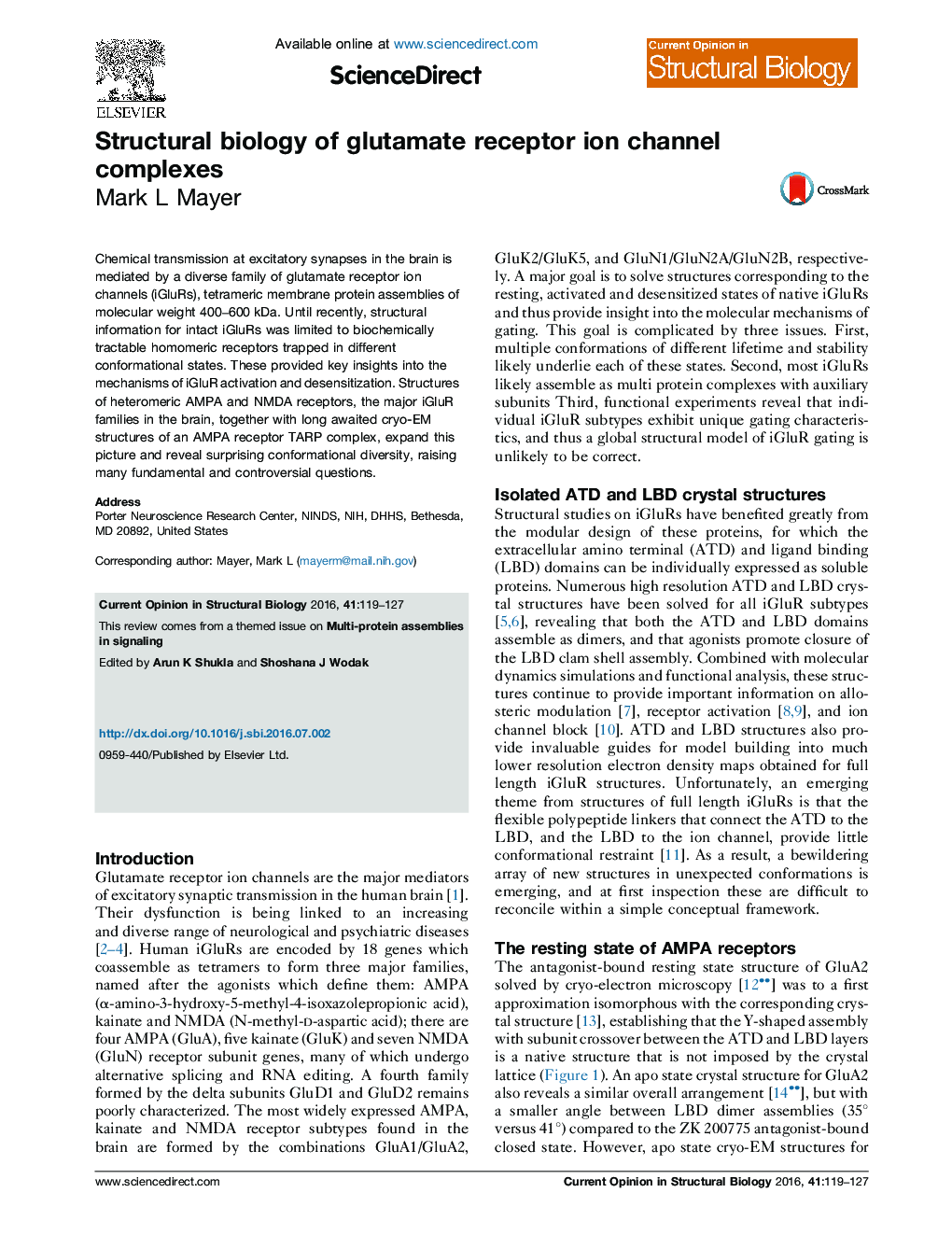| Article ID | Journal | Published Year | Pages | File Type |
|---|---|---|---|---|
| 8319524 | Current Opinion in Structural Biology | 2016 | 9 Pages |
Abstract
Chemical transmission at excitatory synapses in the brain is mediated by a diverse family of glutamate receptor ion channels (iGluRs), tetrameric membrane protein assemblies of molecular weight 400-600Â kDa. Until recently, structural information for intact iGluRs was limited to biochemically tractable homomeric receptors trapped in different conformational states. These provided key insights into the mechanisms of iGluR activation and desensitization. Structures of heteromeric AMPA and NMDA receptors, the major iGluR families in the brain, together with long awaited cryo-EM structures of an AMPA receptor TARP complex, expand this picture and reveal surprising conformational diversity, raising many fundamental and controversial questions.
Related Topics
Life Sciences
Biochemistry, Genetics and Molecular Biology
Biochemistry
Authors
Mark L Mayer,
